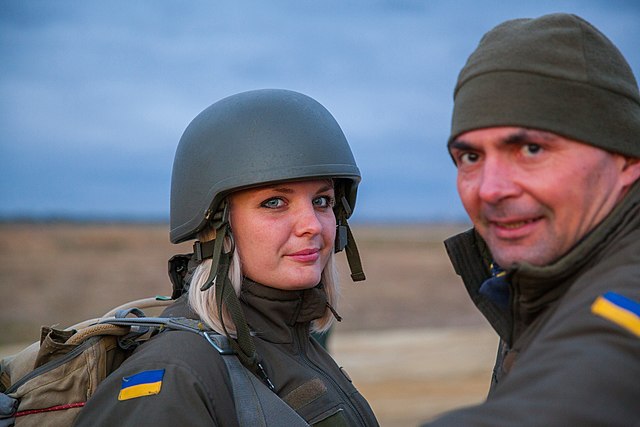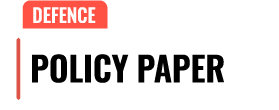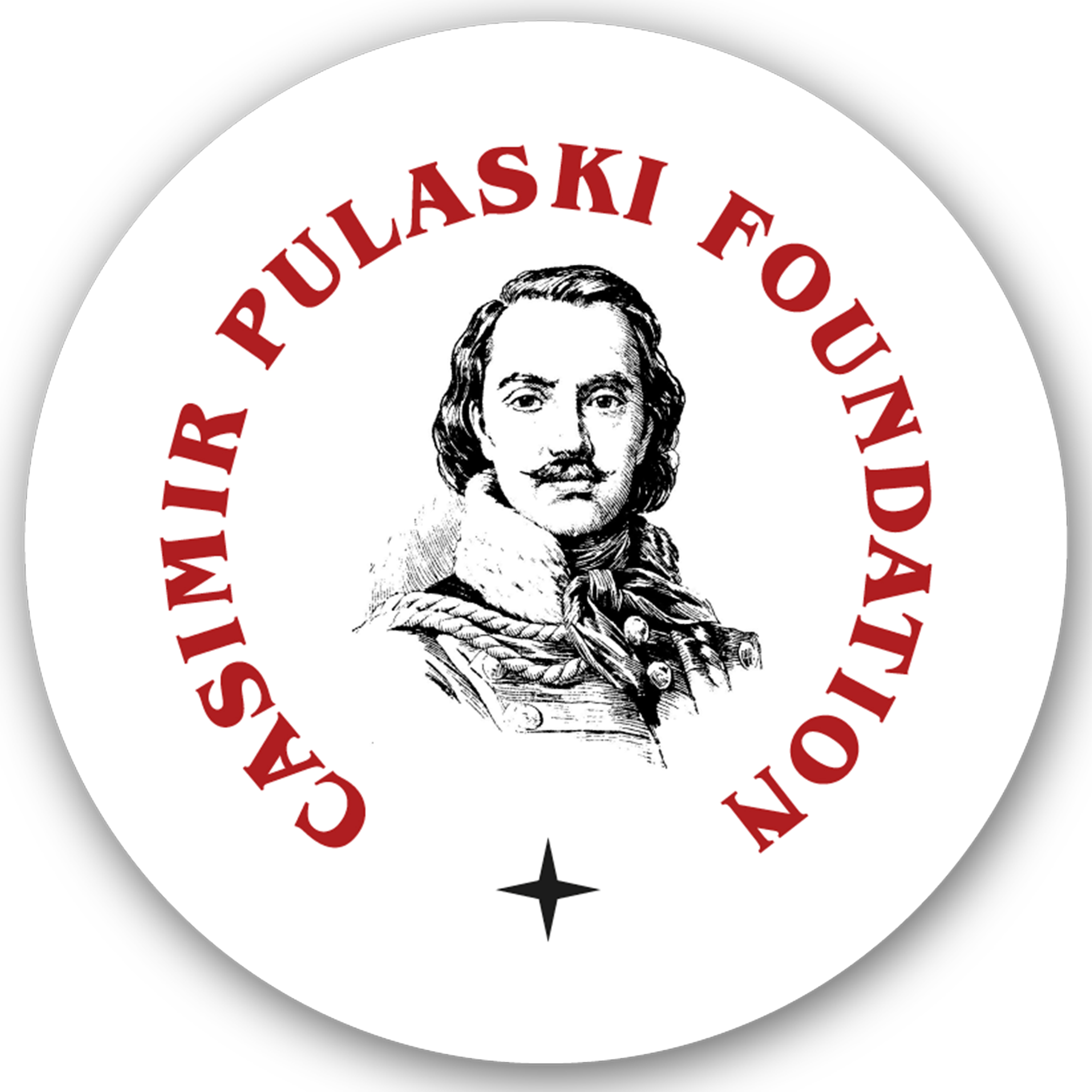PULASKI POLICY PAPER Women and the War in Ukraine Gabriela Rudnik
Autor foto: Domena publiczna



PULASKI POLICY PAPER Women and the War in Ukraine Gabriela Rudnik
Autor foto: Domena publiczna
Women and the War in Ukraine
Autor: Gabriela Rudnik
Opublikowano: 20 października, 2022
Pulaski Policy Paper no 23, October 19 2022
Since its commencement in February 2022, the Russo-Ukrainian war has posed what some deem the most severe challenge to Europe since the Yugoslav War of the 1990s. Alongside diminishing security levels, Europe has seen the onset of a humanitarian disaster which continues to disproportionately affect Ukrainian women and girls. The response provided by the European Union to women, both those living in and leaving Ukraine, will inevitably determine the direction of European feminism and gender politics.
Based on UN Women’s 2022 “Rapid Gender Analysis of Ukraine” and the provided answers from Ukrainian female respondents the following are seen as the ways in which women have been most affected due to the war, and therefore the most pressing humanitarian needs for women at present.
Healthcare
At the time of release access to healthcare, both physical (24%) and mental (21%), proved to be the priority for Ukrainian women. Prior to the war, 84% of all healthcare staff in Ukraine were women, who actively continue to engage as front-line respondents in both military and civilian cases. However, the number of medical professionals leaving Ukraine has left shortages in staff, affecting chiefly war-ravaged areas that have known little peace even prior to 2022.
The Russian army’s targeting of densely populated targets in civilian areas has, in the healthcare sector, profoundly impacted pregnant women and the children they carry. Hospitals, particularly maternity hospitals, have been shelled without regard as was the case during the bombing of Mariupol. Simultaneously, such actions have increased both civilian fatalities and the number of pregnant women forced to give birth in dire and unsuitable conditions, increasing birth-related infant and female mortalities, as well as the number of stress-related premature births and miscarriages. Estimates suggested that from May onwards, over 80 000 Ukrainian women who were due to deliver would not be able to do so safely, or in an adequately medically equipped and sanitised environment. In many cities facing maternity ward destruction, new-borns are being received and treated in underground ICU’s, serving also as air raid shelters.
Access to medicine has also become challenging, particularly for the elderly, those with disabilities, and those suffering from chronic illness. Respondents noted often and specifically the lack of specific treatment and support for the elderly, of whom two-thirds over the age of 65 are women. The vulnerability of this group is increased when residing in smaller towns and villages, cut off from access to humanitarian convoys by Russian troops and reliant on medical aid from larger cities, which in present circumstance often cannot come.
Safety – Gender Based Violence (GBV)
The second largest concern was lack of protection – 40% of women surveyed agreed that they live in constant fear for the safety of themselves and their families. Experts have reported a spike in GBV (Gender Based Violence) since the onset of the conflict, especially domestic violence and human trafficking. Although lacking complex data at present, the war has seen shutdowns of many GBV-targeting services for women and girls, such as shelters. In some cases, police have stopped responding to calls regarding GBV due to resource shortage. This impacts most severely those cities which prior to wartime were dependent on their regional capitals, for example Mariupol in the Donetsk Oblast, or Zaporizhzhia in the Zaporizhzhia Oblast.
The war has seen the Russian army use rape as a strategic weapon for two key reasons. Firstly, it is used as an intimidation tactic through which a perceived ‘superiority’ of the enemy is entrenched, driving psychological fear into civilians, and encouraging their flight from the area. Secondly, rape is used as a torture tactic intended to humiliate and punish the enemy, questioning the strength of their ability to protect ‘their own.’ Evidence supports these theories. Prosecutor General Venediktova has heard accounts from all over Ukraine (Bucha, where Russian soldiers raped women and girls, some only 14, in a cellar; of women held as sex slaves, being raped in front of their husbands; of elderly, women being raped and murdered).
As mental health provisions are insufficient across Ukraine, GBV victims, who tend to be women and minors, often have little to none access to psychological support. Due to rape being under-reported during wartime, it is very likely that many victims will never get to hold their abusers accountable.
Food and shelter
The war has exacerbated resource scarcity, with access to food becoming a priority for 13% of female respondents. Women in Ukraine have long faced increased food insecurity in comparison to men, as the issue touched 37,5% of female-headed households in conflict-affected areas since 2014. These figures have only risen with the enlargement of the conflict-area. Food insecurity is felt especially in cases where specific nutrition is required, as is the case for pregnant and breastfeeding women. Women lacking sufficient nutrition to produce breastmilk for infants turn to baby formula, currently a premium product alongside baby food. The risk of malnutrition amplifies for women and girls when considering the tendency of both to undereat in crisis situations, with mothers particularly prioritising the well-being of their children and dependents. Starvation has also been used as a war weapon by the Russian army (in Chernihiv, a line of 10 civilians queuing for groceries were shot at, some fatally, a repetitive incident in many occupied cities; the siege of Mariupol saw the induction of famine intentionally to starve civilians to death as a means of breaking resistance).
Women also express lack of safe shelter (21%) and reliable information regarding aid and their eligibility to obtain it (4%). Displaced women must often rely on unvetted advice regarding shelter, posing a security risk when considering the perceived vulnerability of women travelling without a male companion. Even the displaced who do settle often can find themselves in predatory situations; Female refugees undertaking paid employment within their country of refuge can also face significant financial discrimination concerning fair pay. Reports include underpayment, or an outright refusal of employers to pay due wage for what often is hard, physical labour.
Lack of women in formal decision-making
Over 22% of surveyed women declared that they have gained influence in decision-making from the start of the war. At the household level women have, by default, become the predominant decision-makers. The same applies to informal community level decision-making, with women engaging in volunteers, leading the humanitarian response, organising social media campaigns. On the national level, women have become leaders in diplomacy due to the ban on leaving the country for men aged 18-60. Many women in governmental positions have become crucial, vocal participants in decision-making, notably Deputy Prime Minister Iryna Vereshchuk.
However, 71% of women surveyed claim they have not noticed change in their decision-making influence. Women have been displaced into communities previously alien to them, while the militarisation of society has meant that decisions are undertaken rapidly, in a military fashion, often with lack of consultation and consideration of the impact they may have on women, their dependents, or minorities. For example, the lack of Roma women in decision-making means that the women and children in the 400 000 strong Roma community will not have their needs appropriately met; consequently, discrimination in access to food, shelter, and migration policy due to documentation continues for the community. It is therefore evident, that women’s participation in formal decision-making is restrictive, determined by age, socioeconomic status, disability, caregiving responsibilities, education level, making it selective and largely exclusionary.
From a feminist security perspective, this lack of women in formal decision-making thoroughly contributes to the perception of women as defenceless victims rather than individuals with full agency, capable of providing valid, constructive advice able to improve the well-being of their communities. In the long term, this setback for women may reduce the current progress towards gender equality in Ukraine.
Engaging the European Union
The EU has long focused on providing Gender Equality within its member states; the Council of Europe encompasses a Gender Equality Commission, and the EU actively undertakes the fulfilment of its 2020-2025 Gender Equality Strategy. One must consider, with the above in mind, that as of June 2022, the EU has named Ukraine an ‘accession candidate.’ The EU has already provided significant humanitarian aid to Ukraine, €243 million overall and €1,5 million for dedicated projects supporting the UN Population Fund in assisting women and girls. Aid alone is, however, not sufficient as the EU’s gender equality commitments must equally apply to Ukraine, which in wartime especially requires the mobilisation of targeted, intersectional aid for all women and their specific needs, providing a platform for women’s participation.
The EU’s partnership to NATO also means that it is due to recognise its commitment to NATO principles concerning gender equality, namely the “Women, Peace and Security” programme, enacted by NATO in 2000. Focusing on the inclusion of gender perspectives during both conflict and peacetime, in the case of Ukraine the EU should focus on devising methods of female-inclusive conflict management, as well as cooperative security provisions. A failure on behalf of the EU to successfully respond to Ukrainian women’s needs at present will signify a lack of permanent conviction to gender equality for all women, potentially encouraging a backslide in the progress made towards the advancement of women since its 1991 independence.
Conclusions
1. Women and girls have felt the impact of the Russo-Ukrainian War much more severely than men due to the anti-civilian nature of the Russian offensive.
2. Ukrainian women consider access to healthcare, the safety of their families, and access to food and shelter as priorities.
3. Humanitarian aid should focus on supporting Ukraine’s main healthcare actors, supplying medicines for those with chronic illnesses, and ensuring access to mental health and psychosocial support both online and offline.
4. Actors should provide GBV services complementary to government ones, or fill the gaps left by the war. Services must be accessible and non-discriminatory. Respondents should receive training in recognising signs of GBV and know referral procedures. Displaced persons must be informed of the risks of human trafficking, to better protect themselves.
5. Food assistance should be tailored to meet specific needs, especially those of mothers with young children, pregnant and breastfeeding women, individuals with chronic illnesses, and the elderly. At shelters, breastfeeding should be given access to pumps and formula.
6. Internally displaced persons and those unable to evacuate must be provided with safe and accessible shelter, where accommodation should be sex or family segregated. Child-friendly spaces should be established where childcare and child mental support is provided.
7. Women must be empowered to engage in decision-making in an inclusive and non-discriminatory war; this is particularly important as to better provide for the needs of Roma and trans women, as well as those in the LGBTQ+ community. Female CSOs, community leaders and politicians must be involved.
8. As the response to Ukrainian women’s needs must involve female actors in all elements of the response chain, the EU should actively provide a gender-specific response for Ukraine in line with its Gender Equality Strategy.
Author: Gabriela Rudnik, external contributor
[1] Gender Analysis of the Situation in Ukraine, NGO Working Group On Women, Peace And Security, accessed October 19 , 2022, https://www.womenpeacesecurity.org/wp-content/uploads/Gender-Analysis-of-the-Situation-in-Ukraine-April-2022.pdf
[1] Dorothy Q. Thomas, Ralph E. Regan E, “Rape in War: Challenging the Tradition of Impunity”, SAIS Review (Vol) 1994, accessed October 19 , 2022, https://www.hrw.org/legacy/women/docs/rapeinwar.htm
[1] Ukraine: EU is stepping up support to sexual and gender-based violence survivors, accessed October 19 , 2022, https://civil-protection-humanitarian-aid.ec.europa.eu/news-stories/news/ukraine-eu-stepping-support-sexual-and-gender-based-violence-survivors-2022-05-13_en






